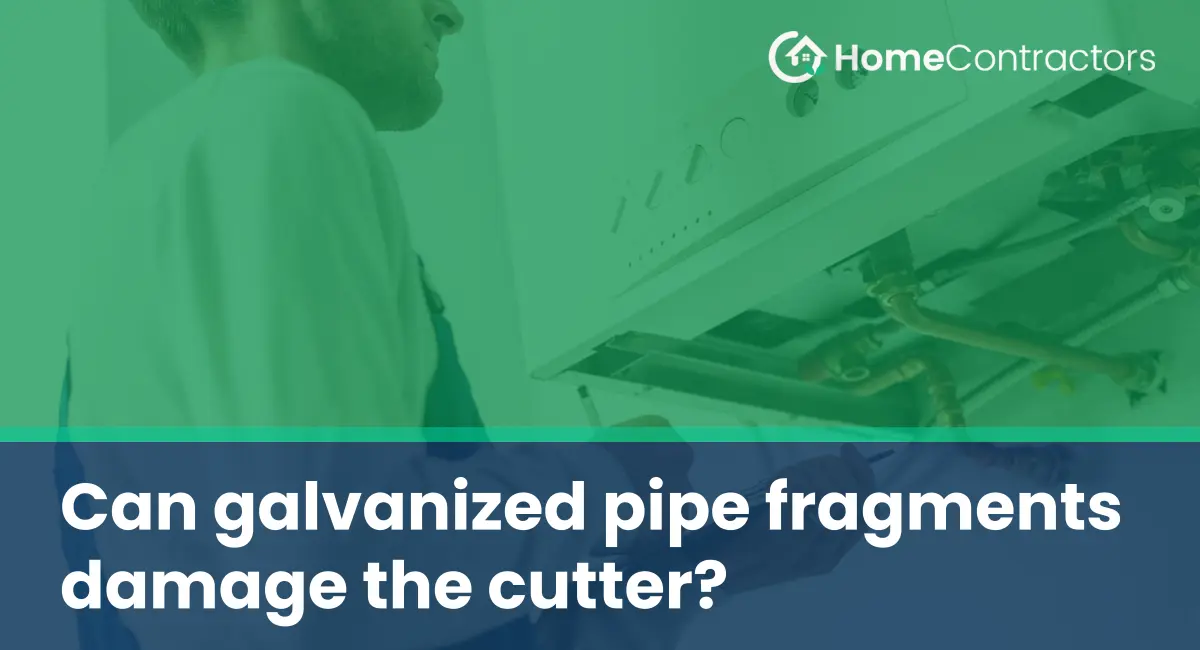Galvanized pipes are commonly used in plumbing systems due to their corrosion resistance, durability, and longevity. However, over time, these pipes may deteriorate and produce fragments that can pose risks to various components of the plumbing system. One concern that arises is whether galvanized pipe fragments can damage the cutter, a critical tool used for cutting and shaping pipes during installation or repairs. This article aims to explore this potential issue and provide insights into the impact of galvanized pipe fragments on the cutter.
Understanding Galvanized Pipes
Before delving into the potential damage to the cutter, it is crucial to have a basic understanding of galvanized pipes. These pipes are made of steel or iron, which are coated with a layer of zinc to prevent rust and corrosion. Galvanization is achieved through a hot-dip process, in which the pipes are immersed in molten zinc. This protective coating provides extended pipe life, making it a popular choice in various plumbing applications.
Deterioration of Galvanized Pipes
Over time, galvanized pipes may deteriorate due to several factors, including exposure to harsh chemicals, high water acidity, or simply the aging process. As the galvanized coating wears away, the pipes become vulnerable to corrosion, leading to the formation of rust, scale, and eventual degradation. In some cases, these deteriorating pipes may start producing fragments or particles that can pose potential risks.
The Role of Fragments
When galvanized pipes start to deteriorate, fragments of zinc, steel, or rust may break off and circulate within the plumbing system. These fragments can range in size, from tiny particles to larger pieces. While the presence of smaller fragments may not have severe consequences, larger pieces can potentially cause damage to various components, including the cutter.
Potential Damage to the Cutter
The cutter is an essential tool used by plumbers and DIY enthusiasts alike for cutting, fitting, and shaping pipes during plumbing works. It typically consists of a cutting wheel or blade that rotates and applies pressure to the pipe, resulting in a clean and precise cut. When fragments such as rust or galvanized coating encounter the cutter, they may cause several issues.
- Blade Dulling: The presence of galvanized pipe fragments can lead to rapid dulling of the cutter’s blade. The hardness of the galvanized coating can wear down the sharpness of the blade, reducing its cutting efficiency and requiring more effort to achieve the desired results.
- Blade Damage: Larger fragments, such as steel pieces or rust flakes, can cause visible damage to the cutter’s blade. These fragments can chip or dent the blade, compromising its integrity and rendering it ineffective for future use.
- Decreased Cutter Lifespan: Continuous exposure to galvanized pipe fragments can significantly decrease the overall lifespan of the cutter. The repeated wear and tear caused by these fragments can result in frequent blade replacements or the need to invest in a new cutter altogether.
Preventing Damage: Best Practices
While the potential damage from galvanized pipe fragments is a concern, there are measures that plumbers and DIY enthusiasts can take to minimize the risks and protect their cutters.
- Visual Inspection: Before cutting into a galvanized pipe, visually inspect it for signs of deterioration. Look for visible rust, flakes, or scale on the surface of the pipe. If the pipe appears significantly degraded, consider using alternative cutting methods or replacing the section of pipe altogether.
- Cleaning the Pipe: Prior to cutting, ensure the pipe is clean and free from any loose fragments. Use a wire brush or sandpaper to remove rust or scale that may cause damage to the cutter or its blades.
- Lubrication: Applying a lubricant to the cutter’s blades can help reduce friction and minimize the impact of any potential fragments. This can prolong the sharpness and effectiveness of the blades, ultimately extending the lifespan of the cutter.
Galvanized pipe fragments can indeed pose risks to the cutter, primarily through blade dulling, damage, and decreased lifespan. It is essential to be proactive in identifying signs of galvanized pipe deterioration and taking preventative measures to mitigate potential damage. By following best practices such as visual inspections, cleaning the pipe, and lubricating the cutter’s blades, plumbers and DIY enthusiasts can ensure a smoother cutting process and maintain the longevity of their cutters.
